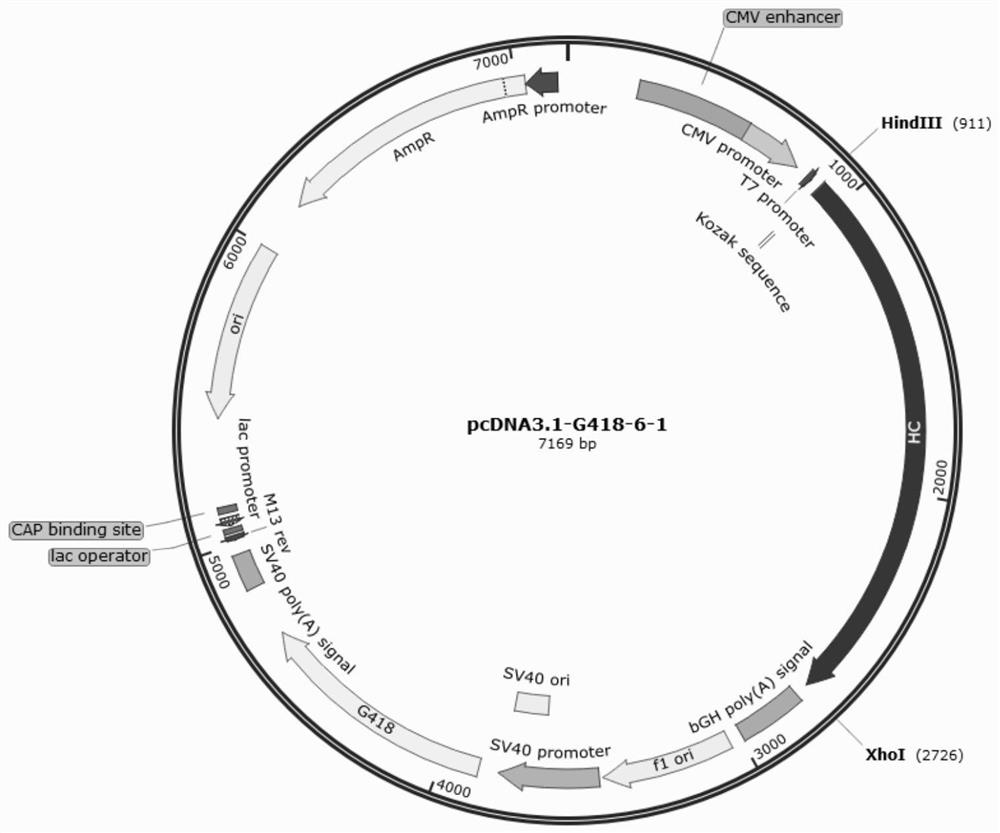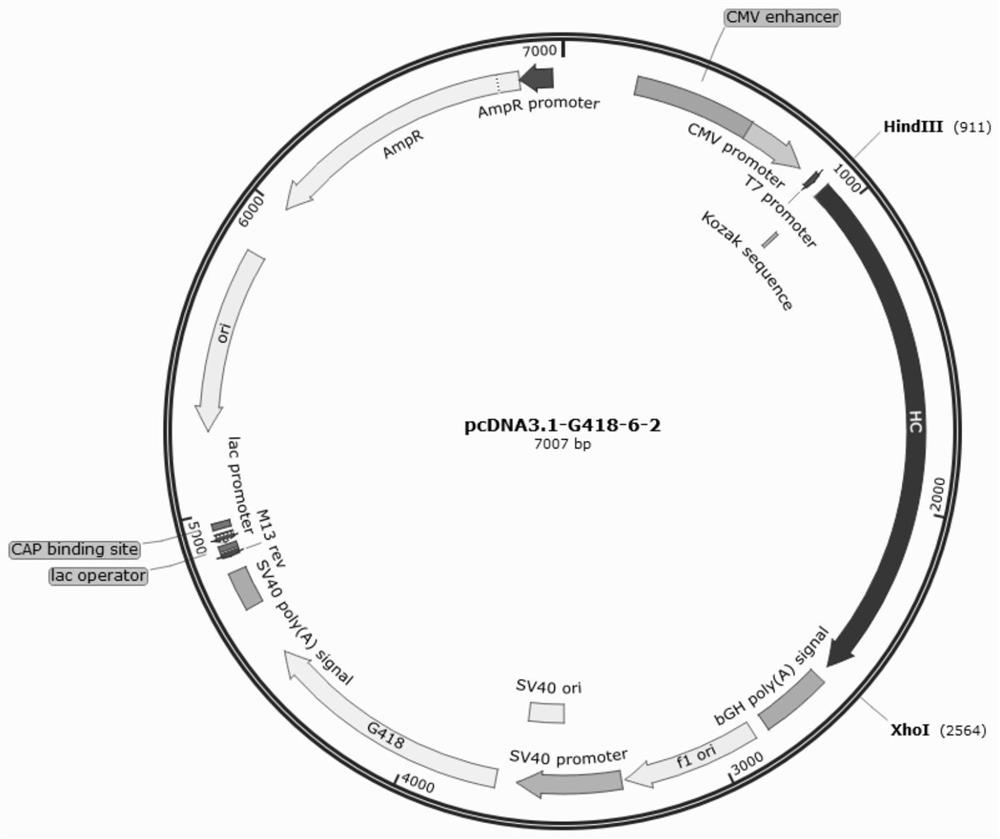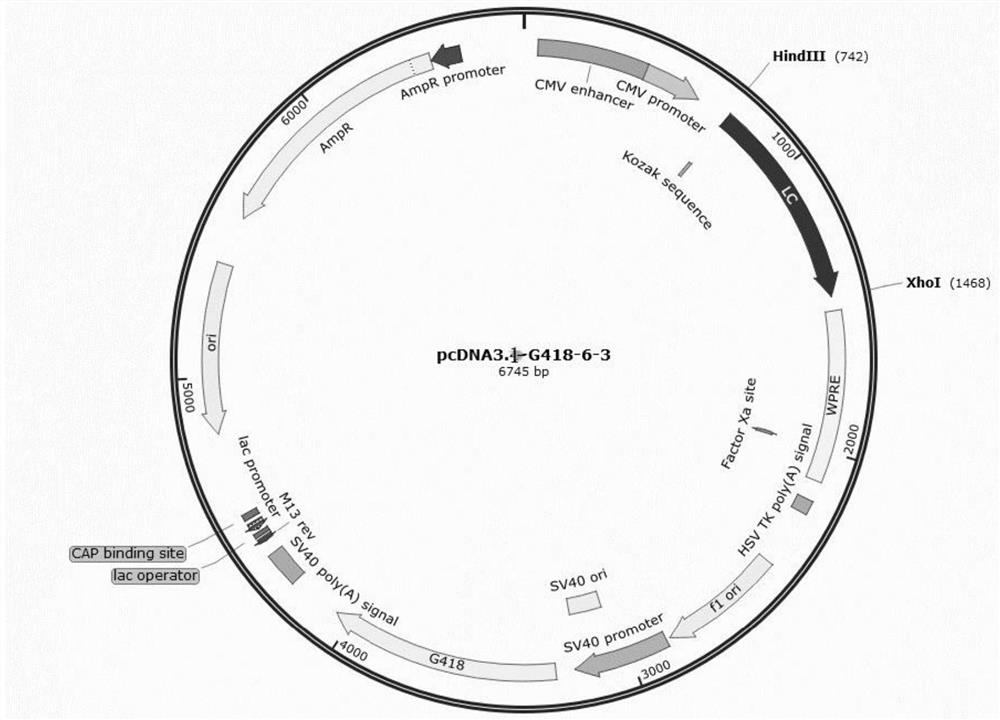Multi-functional antibody as well as preparation method and uses thereof
A multi-functional, antibody technology, applied in the direction of antibodies, antibody mimics/scaffolds, applications, etc., can solve problems such as short half-life, achieve the effects of improved purity, production process and druggability, and easy quality control
- Summary
- Abstract
- Description
- Claims
- Application Information
AI Technical Summary
Problems solved by technology
Method used
Image
Examples
Embodiment 1
[0062] The acquisition and optimization of embodiment 1 nucleotide sequence
[0063] The light chain and heavy chain amino acid sequence information of antibodies 6, 16, and 17 were selected from public or self-developed PD-1 target monoclonal antibody sequence information, and the variable region and constant region information of the sequence was obtained by analysis. The natural IL-15 sequence or IL-15 variant sequence is inserted into the amino acid sequence of one heavy chain, and the IL-15 receptor sequence, preferably IL-15RαSushi sequence, is inserted at the corresponding position of the other heavy chain. According to needs, adjust the Fc of the amino acid sequence of the antibody to other IgG types, such as IgG1, etc., and further design the desired form of amino acid mutation in each heavy chain, thereby obtaining the amino acid sequence of the target antibody, which are respectively:
[0064] Antibody 6 - the first heavy chain is SEQ ID NO: 1, the second heavy ch...
Embodiment 2
[0072] Embodiment 2 Gene synthesis and the construction of expression vector
[0073] The pcDNA3.1-G418 vector is used as a special vector for expressing the light chain and heavy chain of the multifunctional antibody. The pcDNA3.1-G418 vector contains the promoter CMVPromoter used for the heavy chain, the eukaryotic screening marker G418 tag and the prokaryotic screening tag Ampicilline. Gene synthesis obtained antibodies 6, 16, and 17 to express the nucleotide sequences of the light chain and heavy chain. HindIII and XhoI were used to double-enzyme digest the vector and the target fragment, and after recovery, enzyme-linked by DNA ligase and transformed Escherichia coli competent cells DH5α, positive clones were selected and subjected to plasmid extraction and enzyme digestion verification to obtain recombinant plasmids containing the full-length first heavy chain, second heavy chain, first light chain and second light chain of antibody 6 , respectively pcDNA3.1-G418-6-1,...
Embodiment 3
[0074] Example 3 plasmid extraction
[0075] According to the method described in "Molecular Cloning Experiment Guide" (2002, Science Press), the recombinant plasmids containing the above-mentioned genes of interest were transformed into Escherichia coli competent cells DH5α, and the transformed bacteria were coated on a medium containing 100 μg / ml ampicillin. Culture on LB plates, select plasmid clones and culture them in liquid LB medium, shake the bacteria at 260rpm for 14 hours, extract plasmids from the endotoxin-free plasmid extraction kit, dissolve them in sterile water, and measure the concentration with a nucleic acid protein quantifier.
PUM
| Property | Measurement | Unit |
|---|---|---|
| Volume | aaaaa | aaaaa |
| Volume | aaaaa | aaaaa |
Abstract
Description
Claims
Application Information
 Login to View More
Login to View More - R&D
- Intellectual Property
- Life Sciences
- Materials
- Tech Scout
- Unparalleled Data Quality
- Higher Quality Content
- 60% Fewer Hallucinations
Browse by: Latest US Patents, China's latest patents, Technical Efficacy Thesaurus, Application Domain, Technology Topic, Popular Technical Reports.
© 2025 PatSnap. All rights reserved.Legal|Privacy policy|Modern Slavery Act Transparency Statement|Sitemap|About US| Contact US: help@patsnap.com



